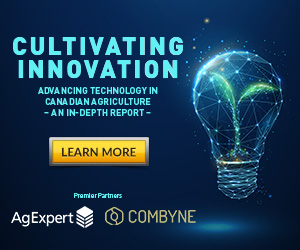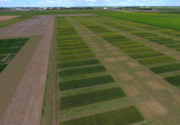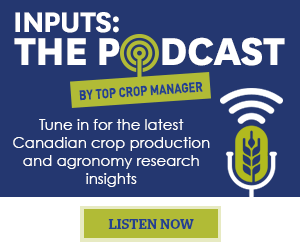| |
| |
 |
 |
| |
 |
|
@{mv_date_MMM d, yyyy}@ |
|
| |
 Researchers are in the process of providing a much-needed revision to the crop nutrient uptake and removal guidelines for crops grown in Western Canada, keeping this valuable resource relevant and useful.
» Read more...
Researchers are in the process of providing a much-needed revision to the crop nutrient uptake and removal guidelines for crops grown in Western Canada, keeping this valuable resource relevant and useful.
» Read more...
Unlike pulse crops that can fix N through rhizobia to meet their N needs, non-legume crops have to rely on fertilizer N and residual soil N to meet requirements. Researchers at the University of Saskatchewan are evaluating a new biological for nitrogen (N) fixation in non-legume crops such as canola and wheat.
» Read more...
A research project based in Saskatchewan is focused on identifying the most effective sources and placement methods on a cereal-pulse-oilseed rotation, which can improve efficiency, return on investment, and reduce losses to the environment.
» Read more...
|
| |
|
| |

Join us for a free webinar on June 28th at 11:00am ET with Shea Ferster CPA, CA, business advisor with MNP where he will discuss how to use and interpret data to make smart financial decisions for your farm operation.
Shea will review key items such as data collection to benchmark and analytics to figure out what you could do differently followed by a live Q&A period.
» Register for free today |
| |
|
| |
 Implementing good management practices to reduce greenhouse gas emissions from fertilizers is a priority for the agriculture sector, together with agronomic and economic performance targets. What practices in the agriculture sector help reduce greenhouse gas emissions from fertilizer, enhance carbon sequestration, and complement the 4R nutrient management stewardship program? A project in Alberta, led by researchers including Brian Beres and Mario Tenuta, is out to answer this question.
» Learn more...
Implementing good management practices to reduce greenhouse gas emissions from fertilizers is a priority for the agriculture sector, together with agronomic and economic performance targets. What practices in the agriculture sector help reduce greenhouse gas emissions from fertilizer, enhance carbon sequestration, and complement the 4R nutrient management stewardship program? A project in Alberta, led by researchers including Brian Beres and Mario Tenuta, is out to answer this question.
» Learn more... |
| |
|
| |

|
| |
| |






